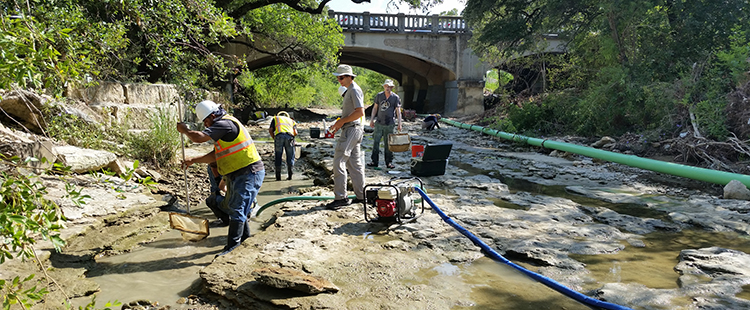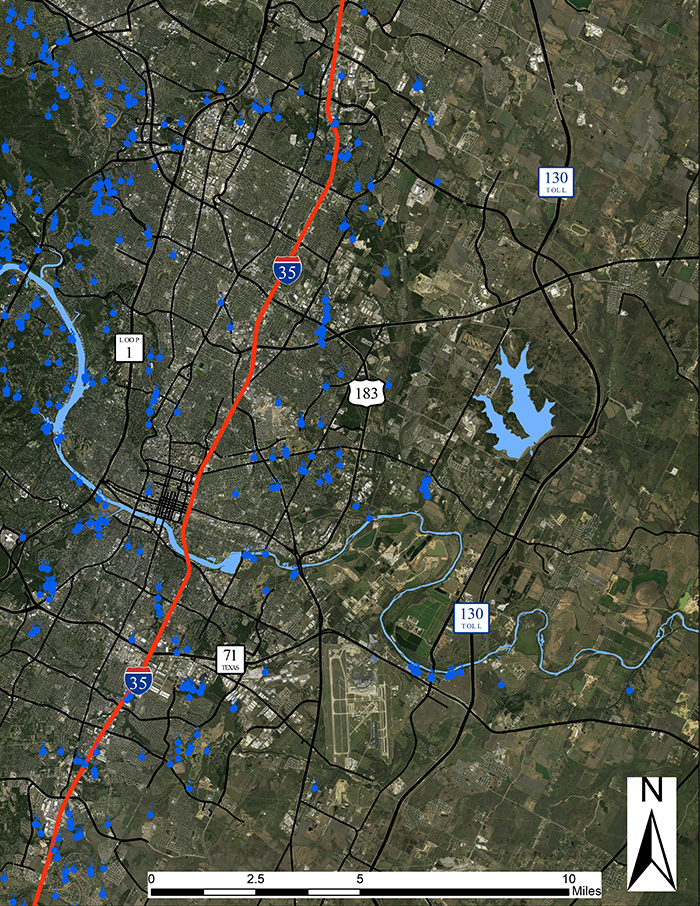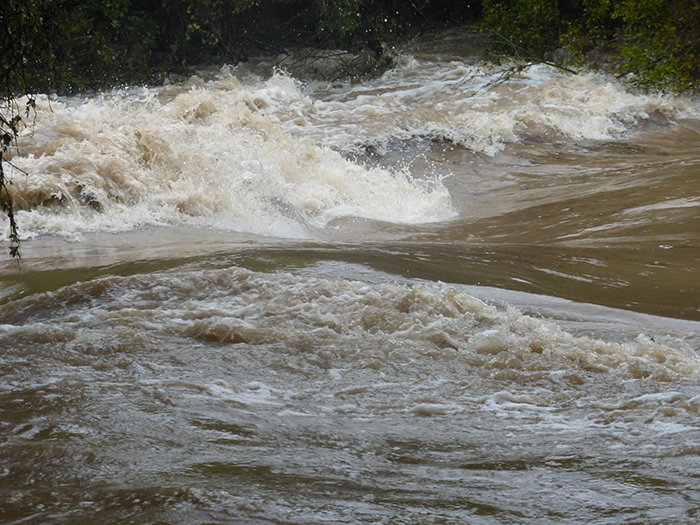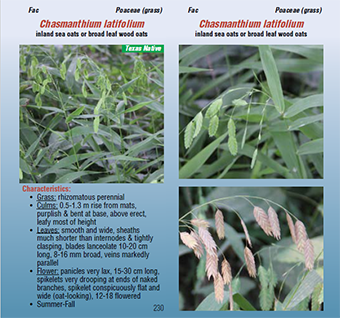
Have you heard that drinking untreated (or “raw") water from Austin's springs is good for your health? Unfortunately, it's not! Drinking water from springs, especially in urban areas, can make you sick.
The water in underground aquifers refi…

Crews lower water levels in Shoal Creek before starting a construction project.
Our environmental scientists greatly value the wildlife in Austin’s creeks and work hard to save fish and other aquatic inhabitants when creeks are impacted. Sometimes the City’s own projects are the source of the disturbance. For example, construction projects to stabilize creek banks or repair infrastructure require temporarily draining the water from…
Bull Creek District Park, the anchor for the Upper and Lower Bull Creek Greenbelts, is one of Austin’s most popular parks. Beloved for its beautiful limestone outcroppings, springs, and cascading creek, this 47-acre park offers numerous recreational opportunities, including hiking.
To help enhance a visit to this park, we’d like to point out a few of the special environmental features that you might see. This includes some Critical Environmental Features (CEFs), such as springs and cliffs, which are protected from development by the City’s Land Development Code.
Please note that dogs are welcome at the park, but must stay on-leash.
Let’s explore the park!
…You’re probably familiar with Barton Springs Pool in Zilker Park, a popular destination for swimming, relaxing, and cooling off on a hot summer day. And, you might be familiar with some of the other west Austin springs that are scenic destinations to visit on foot or by boat. But, did you know there are HUNDREDS of other springs in our city, many of which are located in east Austin?

Map of Austin S…

Strong flow in Waller Creek after a significant storm
This may be hard to believe during the hot, dry months of summer, but Austin receives an average of 35 inches of rain a year, or nearly 5 inches more than the average rainfall over the continental United States. Central Texas rain tends to fall in large surges, rather than slowly throughout the year. Heavy rainfall can overwhelm the capacity of natural areas and lawns to absorb and hold the w…
Click here to watch the video!
In Zilker Park, near Barton Springs’ north gate and the Zilker Zephyr train station, you’ll see one of Austin’s environmental treasures – Eliza Spring. To see the spring, look inside the historical, sunken, fenced-off amphitheater.
Eliza Spring is one of four springs in Zilker Park where the endangered Barton Springs and Austin Blind salamanders live. The largest known population of Austin’s unique and endangered Barton Springs salamander makes its home in Eliza Springs.
…
For many years, the City of Austin’s Watershed Protection Department (WPD) has studied trees and other vegetation that grow along local creeks. These vegetated areas along the water are called “riparian buffers,” and they benefit our creeks and river by improving water quality and preventing erosion. Most of WPD’s riparian buffer studies have been in central and west Austin; however, a recent study took place in far eastern Travis County, around and east of U.S. 183. This area, located in the Blackland Prairie region, has deep, fertile soils and is mostly agricultural. WPD’s goal was to document conditions of the creeks and their riparian buffers before major development occurs there.
…
Town Lake... Lady Bird Lake... the Colorado River. Whatever you call it, Austin wouldn't be the same without the scenic body of water separating North and South Austin.
Many residents and visitors appreciate Lady Bird Lake's beauty, whether from a kayak, the hike-and-bike trail, or even while stuck in MoPac traffic. But even many longtime fans have heard inaccurate information about our fair Lady along the way. We're here to test your knowledge and…
Our city is built within a natural environment full of amazing plant and wildlife species. Below is a list of 10 field guides we developed to help nature lovers and explorers, gardeners, anglers, and others identify some of the plant and animal species found in Austin’s creeks, lakes and parks.
Plant Guides
Think back…close your eyes and let your mind return to a day when you were young. You dipped your toes in a little stream, picked up rocks to find bugs, listened to frogs chirping. Austin is a city of creeks; thousands of miles of little creeks and larger creeks flow throughout the city. You can discover, explore, and enjoy many of these creeks. Even in the middle of the urban area, you just nee…


